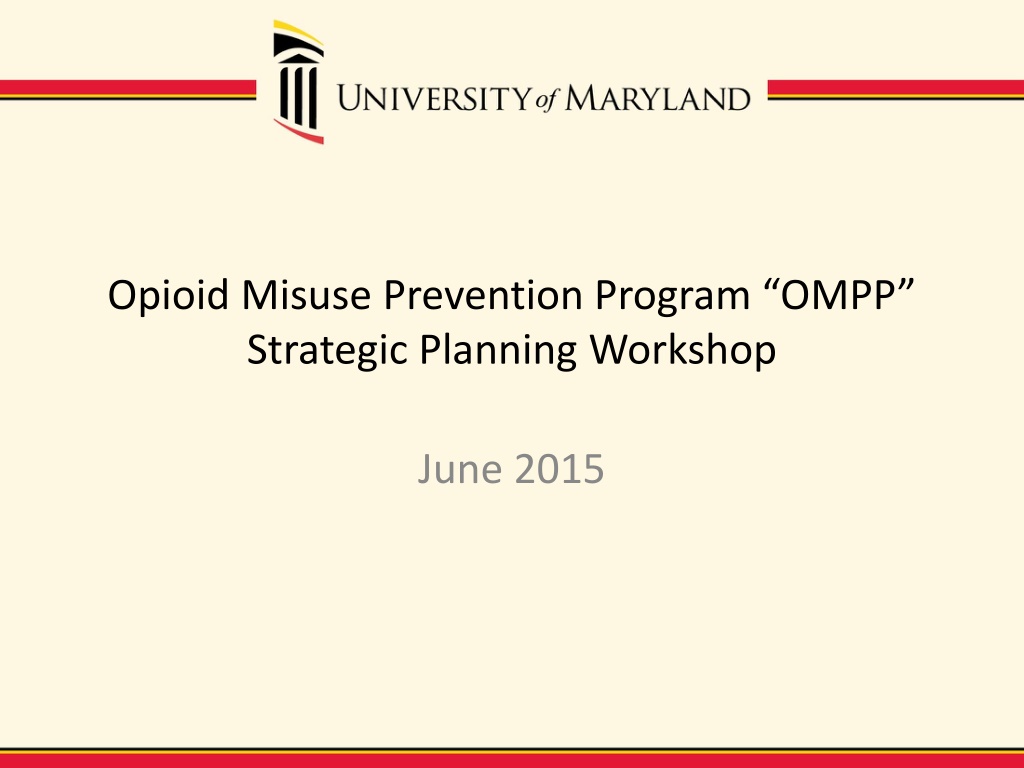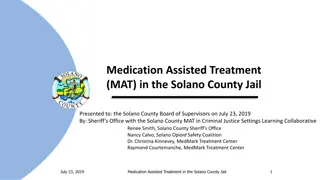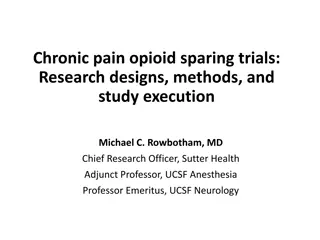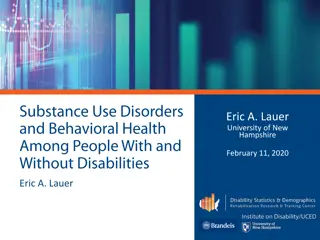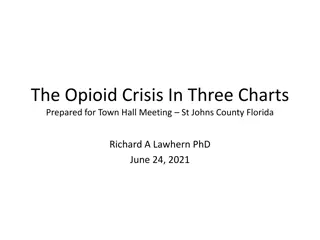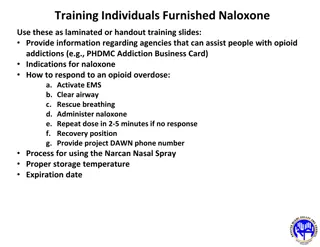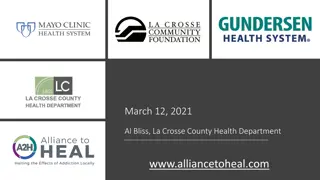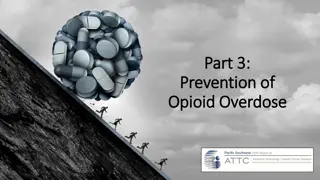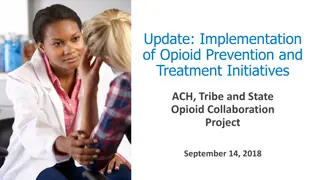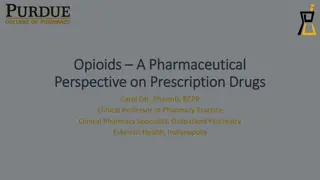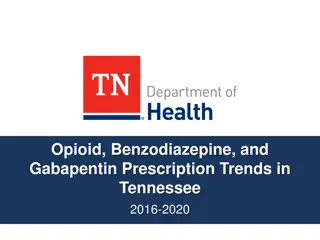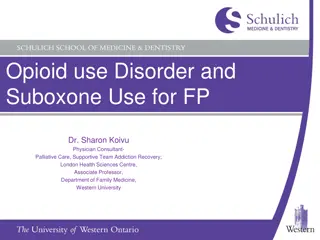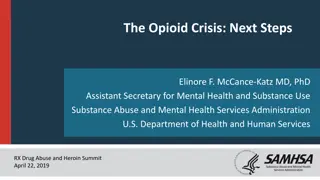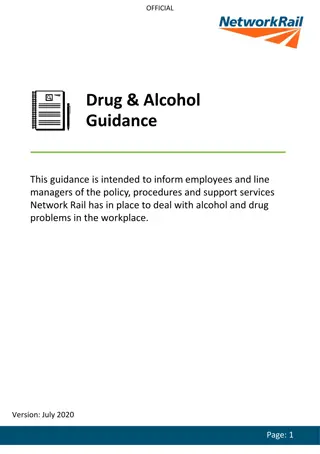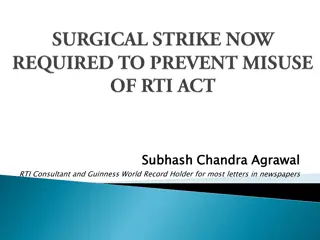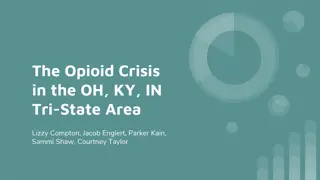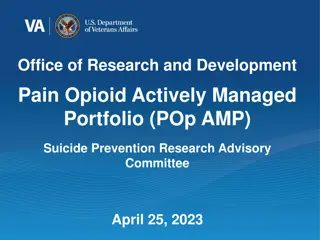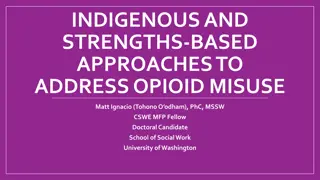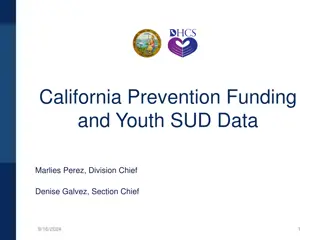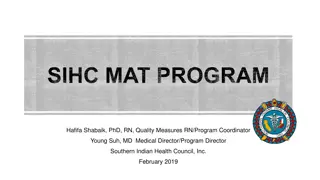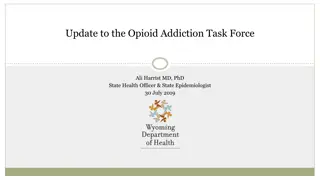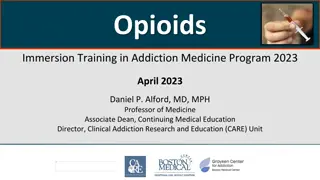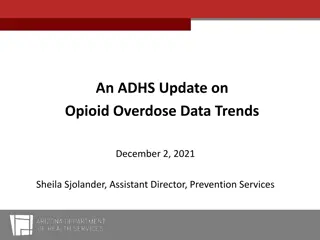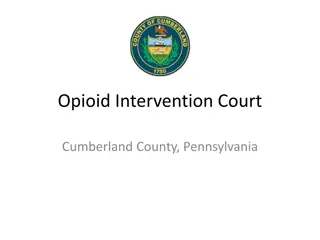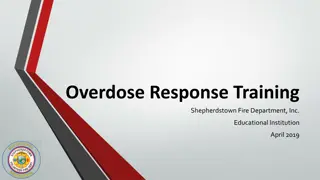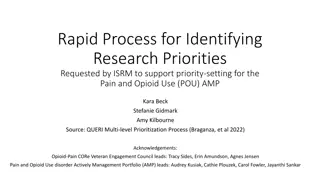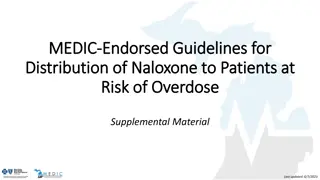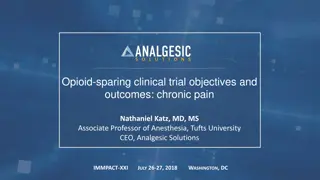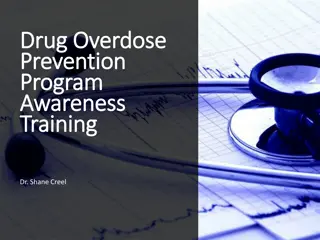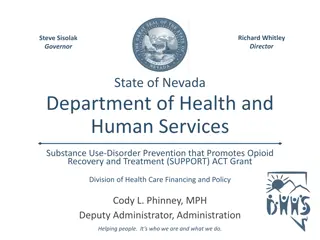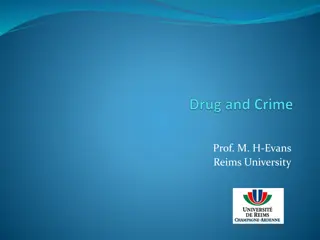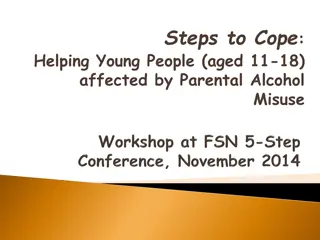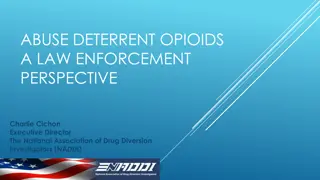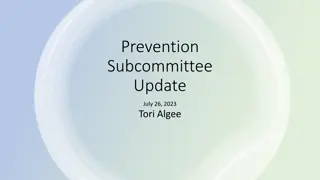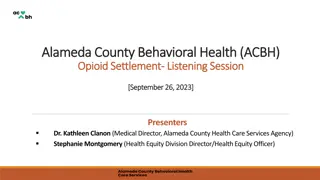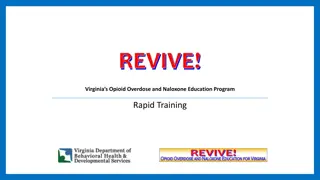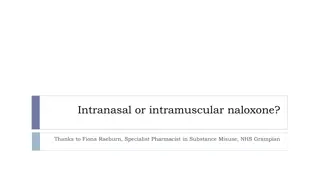Strategic Planning Workshop for Opioid Misuse Prevention
Learn about the strategic planning process for addressing opioid misuse through evidence-based prevention strategies. Discover how to develop a detailed plan with measurable outcomes, involving the entire coalition in selecting impactful strategies. Move from needs assessment to action by identifying specific, actionable factors. Enhance community capacity for successful implementation.
- Strategic Planning
- Opioid Misuse Prevention
- Evidence-Based Strategies
- Community Engagement
- Capacity Building
Download Presentation

Please find below an Image/Link to download the presentation.
The content on the website is provided AS IS for your information and personal use only. It may not be sold, licensed, or shared on other websites without obtaining consent from the author. Download presentation by click this link. If you encounter any issues during the download, it is possible that the publisher has removed the file from their server.
E N D
Presentation Transcript
Opioid Misuse Prevention Program OMPP Strategic Planning Workshop June 2015
What is a Strategic Plan? A strategic plan is a tool that will help guide coalitions through the implementation of selected strategies. Strategic plans serve as a map, so precision and detail are key! 3
Strategic Plans Include the policies, strategies and practices that create a logical, data-driven plan to address the problems identified during the needs assessment 4
Developing a Strategic Plan In order to develop a strategic plan, the following should be considered: What strategies are likely to have the most impact on the contributing factors in my community? Do we have the capacity to implement a particular strategy? What capacity do we need to build and how will we build it? Who will implement the strategies and what steps do we need to take to implement them well? Do we have measurable outcomes for the selected strategies? 5
Who Should be Involved in the Strategic Planning Process? Similar to the assessment process, the entire coalition should have input into the strategic planning including the selection of evidence- based prevention strategies. People support what they help create! 6
Moving from the Needs Assessment to the Strategic Plan Each selected contributing factor should meet the following criteria: Specific (not another intervening variable) Identifiable Actionable 7
9 9
Develop/ deliver an evidence- based training for providers on safe prescribing practices (with a focus on opioids). Provide a forum for booster sessions or discussion. Types and number of sectors trained. Providers lack understanding about safe prescribing practices, particularly for opioids. By (date), providers will report increased knowledge on safe prescribing practices by X%, from ___ to ___, as measured by local survey data Retail access: Opioids are seen as easy to obtain for young adults in MD. Within X years of program implementation, there will be a decrease in the availability of opioids for young adults by X amount, from __ to __, as indicated by PDMP data By the end of the program, young adults self-reported non-medical use of opioids in Maryland will be reduced by X% (from __ to __), as indicated by YRBS data Numbers of trainings and number of hours. Number of providers trained. Fidelity to training design, content, and method of delivery. Number and type of post-training communications. Audience (number and sector) receiving post-training communications. 10
Review and Select Strategies to Address Each Contributing Factor It is important that coalitions know how to select strategies that are aligned with the goals of OMPP During this step, coalitions will need to: Review the strengths and weaknesses of the different strategies provided in the toolkit Determine the likelihood of change, capacity and cost for each strategy (Selecting Strategies Worksheet) Select the strategies that best fit (Goodness of Fit Worksheets) 12
How do coalitions determine strategies that are the BEST FIT for their communities? 13
How do coalitions determine strategies that are the BEST FIT for their communities? To have a best fit within your community, it is preferable that prevention strategies meet several criteria: fit conceptually with your targeted intervening variables and contributing factors fit practically within your community and coalition should be able to be implemented in your community with fidelity should be culturally appropriate sustainable within your community 14
Selecting Strategies Strategies have been broken down into two main categories: Primary prevention Overdose prevention 16
Primary prevention strategies include Prescription drug take back events Provider education trainings Expanding prescription drug lock boxes and drop off locations 17
Overdose prevention strategies include Raising public awareness of the Good Samaritan Law Naloxone programs/ trainings Screening, Brief Intervention and Referral to Treatment (SBIRT) 18
Planning the Process Evaluation Process Measures - measures of the activities from strategy implementation Components of Process Evaluation Counts/Tracking Participation Relevance of messaging Exposure Fidelity 19
Planning the Outcome Evaluation Outcome Evaluation will measure the changes to your selected contributing factors, intervening variables and priorities To measure outcomes- You will need to develop short-term, intermediate and long- term objectives 20
Outcomes Short-Term Outcomes- Changes as a direct result of the strategies/activities, relative to the contributing factor Intermediate Outcomes- Broader changes related to the intervening variables Long-Term Outcomes- Broadest changes related to the state priorities 21
Short-Term Objectives (Changes as a direct result of the strategies/ activities, relative to contributing factor) Intermediate Objectives (Broader changes related to the intervening variables) Intervening Variables (Why is this problem happening?) Long-Term Objectives (Broadest changes related to the state priority) Contributing Factors (What locally is contributing to the problem?) Process Measures (Measure of activities from Strategies/ Activities column) Strategies/ Activities 22
OMPP Priorities Reduce opioid misuse Reduce opioid overdoses Reduce the number of overdose fatalities 23
Developing Objectives to Measure Outcomes An objective is a concrete statement describing what the project is trying to achieve. The objective should be written so that it can be easily evaluated at the conclusion of a project to see whether it was achieved or not. A well-worded objective will be Specific, Measurable, Attainable/Achievable, Realistic, and Time bound (S.M.A.R.T.) 24
Measurable Objectives State: When will the outcome occur What are the desired outcomes Who is involved Proficiency level (by how much) How progress is measured (Indicators or Data Points) 25
Developing Objectives Objective for Long-Term Outcomes (Priority) By the end of the program, young adults self-reported non-medical use of opioids in Maryland will be reduced by X% (from __ to __) , as indicated by YRBS data (indicate years) Objective for Intermediate Outcomes (Intervening Variable) Within X years of program implementation, there will be a decrease in the availability of opioids for young adults by X amount, from __ to __, as indicated by PDMP data (indicate years) Objective for Short-Term Outcomes (Contributing Factors) By (date), providers will report increased knowledge on safe prescribing practices by X%, from ___ to ___, as measured by local survey data (indicate years) When What Who Proficiency Indicator 24 26
Outcome Evaluation Goal Addressed Objective Participants Measure Tools/Resources Required (including time interval) Short-Term Outcomes (~2 months; Changes as a direct result of the strategies/ activities, relative to the contributing factor) Intermediate Outcomes (~12 months; Broader changes related to the intervening variables) Long-Term Outcomes (~24 months; Broadest changes related to the state priority) 27
Implementation Plan State the Priority State the Intervening Variable State the Contributing Factor State the Short-term Objective Evidence Based Environmental Strategy Implementation Action Steps Implementation Timeframe From: Mm/yy To: Mm/yy Who s Responsible - Implementing Agency/Workgroup/ Individual 28
IRB Umbrella Protocol Similar to MSPF umbrella protocol Counties will submit an abstract to be added to the umbrella protocol Once approved implementation can start Counties will submit a modification before any changes are made to the initial abstract Primary data collection Changes to the protocol 29
IRB Process Steps Who is Responsible 1. Complete IRB Abstract Local Evaluator 2. Submit IRB Abstract to OMPP Evaluation Team Local Evaluator 3. Review IRB Abstract and send feedback OMPP Evaluation Team 4. Obtain Health Officer Approval via email Prevention Coordinator 5. Send Health Officer Approval to OMPP Evaluation Team Prevention Coordinator 6. Get required BHA signature OMPP Evaluation Team 7. Submit IRB Abstract to DHMH IRB OMPP Evaluation Team 8. Attend IRB Meeting if needed OMPP Evaluation Team 9. Send IRB Approval Letter to Prevention Coordinator OMPP Evaluation Team 30
Strategic Plan Deliverables OMPP Strategic Plan Application Packet Strategic Plan Summary Logic Model (include a logic model for each contributing factor) Outcome Evaluation Table Implementation Plan (include a plan for each strategy) Budget Strategies Selection Packet Selecting Strategies Worksheet Goodness of Fit Worksheet (complete for each strategy) IRB Abstract 32
Closing Remarks Wrap-up Questions 33
